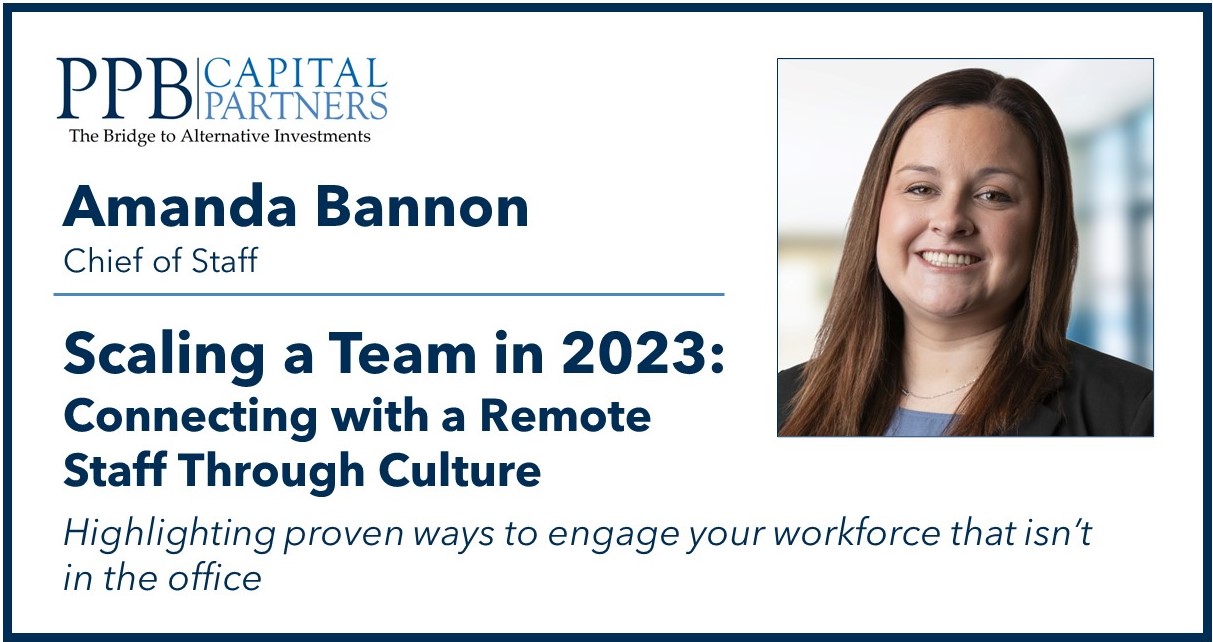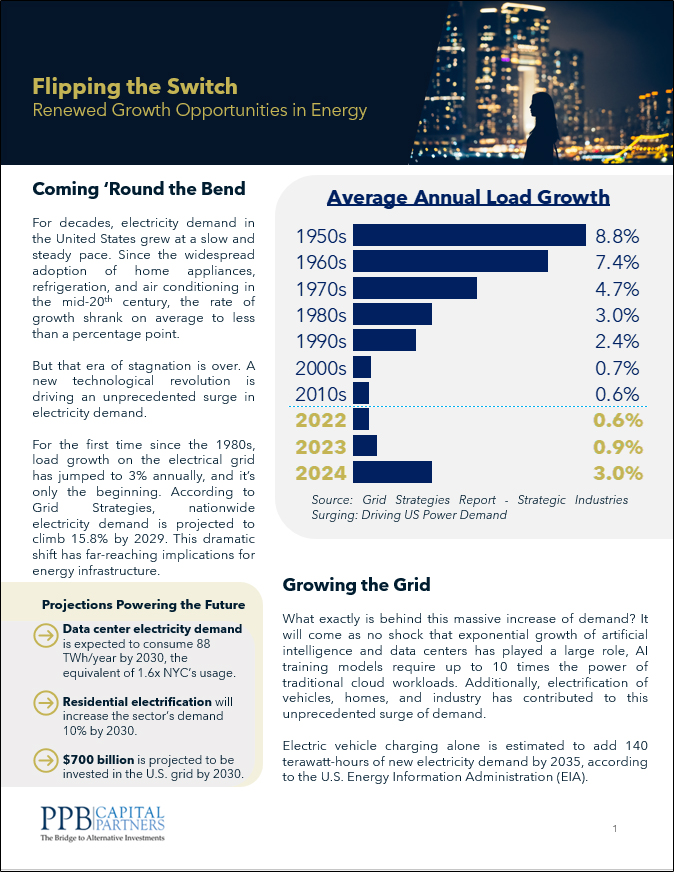
Connecting a Remote Staff Through Culture
April 4, 2023
By Amanda Bannon
Chief of Staff
PPB Capital Partners
In 2018, nearly 18 months before “COVID-19” or “Coronavirus” became household words, 5.7% of the workforce in the United States was working remotely. Fast forward five years to today, that number has multiplied more than four times, to 26%. While the pandemic did accelerate that curve—reaching a high of 41.7% in 2020—the trajectory was already on the upswing. Remote workers increased from that 5.7% in 2018 to 22.4% in 2019.*
We can debate about whether in-office workers or remote workers are more productive for the next five years and not come to a consensus. However, the discussion around scaling a team and creating a culture where everyone is connected is a healthy one. When hiring without borders, it’s imperative to ensure you’re spending your energy on the correct resources.
PPB Capital Partners has 30 staff members, and more than half of them work primarily remotely. Our entire staff meets as a group regularly, spending a day in the office once a month. This provides interaction with colleagues we may not typically see on a regular basis. There are many topics on which to focus as you build and scale a remote team, but the three highlighted below are what have worked for us at PPB Capital Partners as we continue to grow.
Regular Two-Way Communication
Listen as much as you speak. When you listen to your team and show a genuine interest, you’re showing each team member that you’re all in. This fosters commitment and can have reciprocal buy-in from the team. Communication can’t be a one-way street, so opportunities for everyone to provide feedback should be always open. Reach out to your team for feedback and schedule check-ins to determine ways the firm can continue to improve culture.
Avoid working in vacuums by having each department communicate their wins, losses, best practices and how their work affects the rest of the company. To do this, find the right method that speaks to your employees like regular emails, town hall meetings, lunch/learn activities and opportunities for small-group or one-on-one meetings with senior management. Try to find ways that encourage more personal conversations outside of work by scheduling team happy hours and other types of out-of-office events. These items are critical to staying connected when you don’t have daily in-person interaction.
Encourage a Work-Life Balance
This is a concept that is often preached, but sometimes becomes a forgotten practice. It’s easy to say that your firm offers a great work-life balance, but if you aren’t offering opportunities for your team to experience them, the gesture becomes hollow.
Encourage employees to stay engaged with hobbies or other non-work activities and remind them to use their paid time off. It’s important for employees stay motivated and driven and feel enriched both at work and outside of work. Do they enjoy outdoor activities such as coaching or playing sports? Do they have any charitable organizations with which they are involved? Maybe offer to sponsor their kids’ sports team or make a donation to a charitable event. Do they have families and need to spend time at their kids’ activities after work? Allow parents to end their workday at a reasonable time so they don’t miss out on important moments with their families. Find out what interests your employees and proactively focus on their work-life balance with them.
Build an Exciting Company Culture
There is not a one-size-fits-all work arrangement, regardless of if your team is remote, hybrid or in the office. A culture of which your employees can be proud is a way to measure if it’s working. If you’re unable to allow a remote or hybrid framework, turn the tables on the traditional stuffy workplace and look to offer outside-the-box benefits. Bring in lunch once a month for all employees who are in the office, offer superior medical and dental benefits, or offer professional development opportunities inclusive of tuition re-imbursement. Company policies that promote productivity without being overbearing—such as limiting meetings on Fridays and ending meetings after 30 minutes—are small wins that add up to a prideful culture.
Transparency should be an integral part of your company’s culture. Whether it’s turnover, new or lost business, or a new service model your company is exploring, employees should be aware of key events that happen within the firm. It’s important to keep employees in-the-know to facilitate an environment of trust.
The “Apparel Test” is an unofficial measuring stick for your firm. If an employee is wearing a shirt or hat displaying your logo in public and is asked about the company, is that employee eager to share as much as possible or will they shy away and change the subject? Are your employees excited to refer others to work at your company and do they view your company as a long-term career opportunity?
The answers to these (and other) questions will help you gauge the connection your employees have with the company. Connected employees will spread the word about the great work your company is doing. And news of a firm or business with a great culture will spread before you know it.
* https://www.zippia.com/advice/remote-work-statistics/#:~:text=According%20to%20our%20extensive%20research,as%20opposed%20to%20the%20office
Amanda Bannon joined PPB Capital Partners in 2021 and has extensive experience in both compliance and private fund operations. As Chief of Staff, she facilitates and communicates risk mitigation strategies across the firm. Her work is key to vetting and onboarding new fund managers and wealth advisors embarking on their relationship with PPB. Once onboarded, she ensures they maintain seamless access to the platform. Amanda is also an integral part of PPB’s growth strategy planning, constantly evaluating staffing needs as those strategies are implemented.



